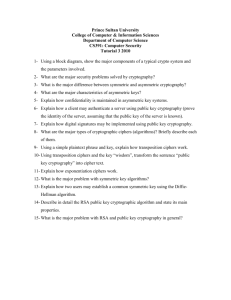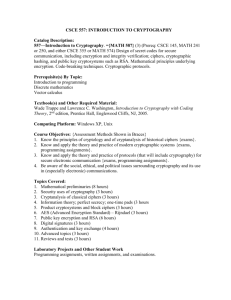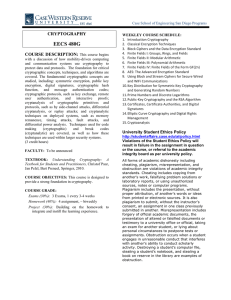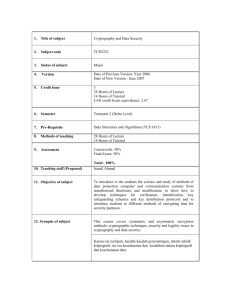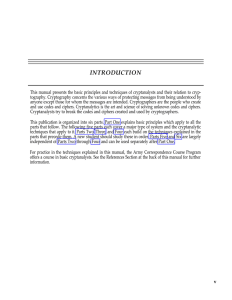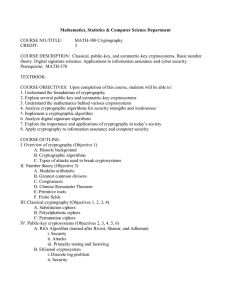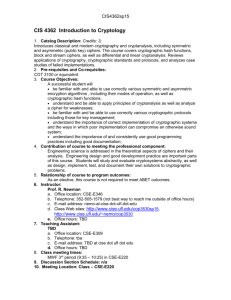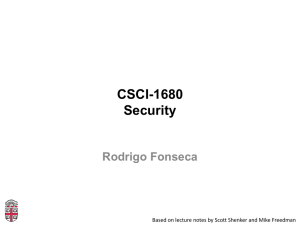Cryptography & Steganography Review Questions
advertisement
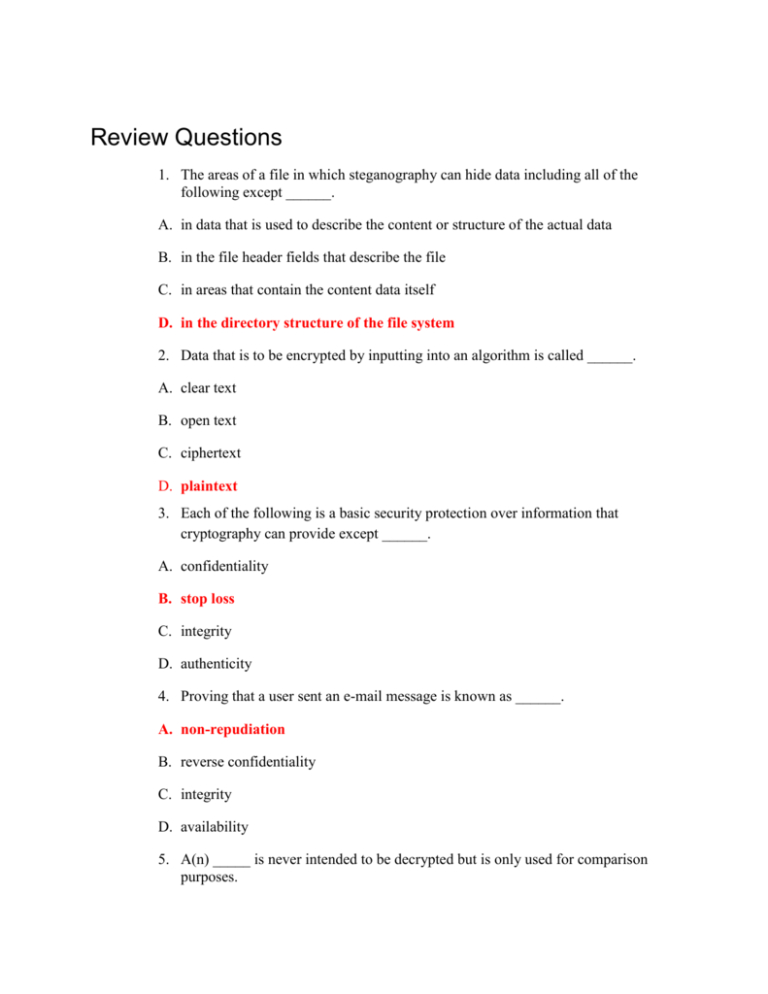
Review Questions 1. The areas of a file in which steganography can hide data including all of the following except ______. A. in data that is used to describe the content or structure of the actual data B. in the file header fields that describe the file C. in areas that contain the content data itself D. in the directory structure of the file system 2. Data that is to be encrypted by inputting into an algorithm is called ______. A. clear text B. open text C. ciphertext D. plaintext 3. Each of the following is a basic security protection over information that cryptography can provide except ______. A. confidentiality B. stop loss C. integrity D. authenticity 4. Proving that a user sent an e-mail message is known as ______. A. non-repudiation B. reverse confidentiality C. integrity D. availability 5. A(n) _____ is never intended to be decrypted but is only used for comparison purposes. A. plaintext B. algorithm C. key D. digest 6. Each of the following is an example of how hashing is used except ______. A. bank automatic teller machine (ATM) B. verifying a user password entered on a Linux system C. determining the integrity of a message D. encrypting and decrypting e-mail attachments 7. Which of the following is NOT a characteristic of a secure hash algorithm? A. The results of a hash function should not be reversed. B. The hash should always be the same fixed size. C. A message cannot be produced from a predefined hash. D. Collisions should be rare. 8. The data added to a section of text when using the Message Digest (MD) algorithm is called ______. A. filler B. extender C. padding D. byte extensions 9. Which of the following is a protection provided by hashing? A. confidentiality B. integrity C. availability D. authenticity 10. Symmetric cryptographic algorithms are also called ______. A. cipherkey cryptography B. public/private key cryptography C. public key cryptography D. private key cryptography 11. Monoalphabetic substitution ciphers and homoalphabetic substitution ciphers are examples of ______. A. symmetric stream ciphers B. generic block ciphers C. asymmetric block ciphers D. hash ciphers 12. Which of the following is the strongest symmetric cryptographic algorithm? A. Data Encryption Standard B. Triple Data Encryption Standard C. Advanced Encryption Standard D. Rivest Cipher (RC) 1 13. When Bob wants to send a secure message to Alice using an asymmetric cryptographic algorithm, which key does he use to encrypt the message? A. Bob’s public key B. Alice's public key C. Bob’s private key D. Alice’s private key 14. A digital signature can provide each of the following benefits except ______. A. Verify the receiver B. Verify the sender C. Enforce non-repudiation D. Prove the integrity of the message 15. Which of the following asymmetric cryptographic algorithms is the most secure? A. RSA B. MD-17 C. SHA-2 D. ERFGA 16. _____ uses the Windows NTFS file system to automatically encrypt all files. A. Encrypting File System (EFS) B. GNU PGP C. IDEA D. MD-1 17. The Microsoft Windows BitLocker whole disk encryption cryptography technology can protect each of the following except ______. A. Windows system files B. User files C. Temporary files D. Domain name system files 18. The Trusted Platform Module (TPM) _____. A. is only available on Windows computers running BitLocker B. includes a pseudorandom number generator (PRNG) C. provides cryptographic services in hardware instead of software D. allows the user to boot a corrupted disk and repair it 19. Most security experts recommend that _____ be replaced with a more secure algorithm. A. DES B. RSA C. AES-256 D. MD-17 20. The Microsoft Windows LAN Manager hash ______. A. is part of BitLocker B. is required to be present when using TPM C. is weaker than NTLMv2 D. is the same as MD-5 E. Behavior-based monitoring

